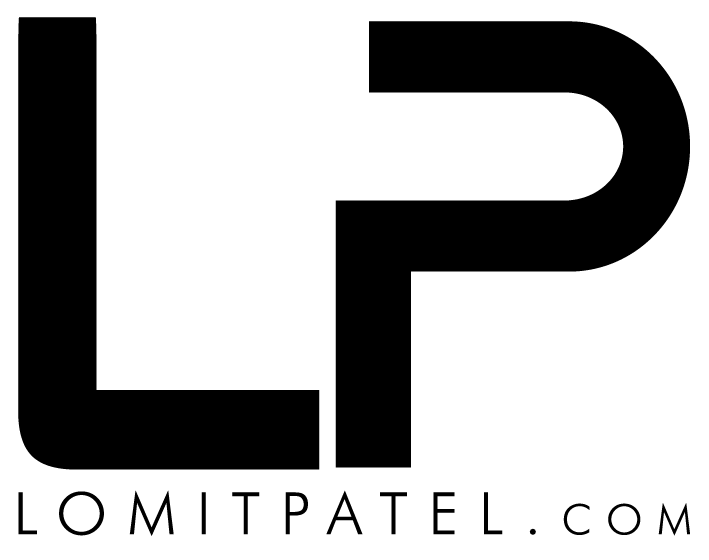Ever felt lost in the sea of strategic planning, wondering if there’s a life raft somewhere? Many startup founders, investors, and even marketing leaders often grapple with defining a clear path forward. The strategy choice cascade offers a structured approach to decision-making, filling a gap often found in business strategy.
This framework isn’t just another model filled with buzzwords. It’s a practical tool that connects aspirations to concrete steps. You’ll discover that creating a solid strategy isn’t as intimidating as it seems.
Table Of Contents:
- Demystifying the Strategy Choice Cascade
- Building Blocks of the Strategy Choice Cascade
- Strategy is More than Just a Plan: Making Decisions
- Why This Framework Can Work: Some Additional Benefits
- Challenges and Considerations
- Real-World Strategy Examples
- FAQs
- Conclusion
Demystifying the Strategy Choice Cascade
The strategy choice cascade involves a series of interconnected choices. These choices must be made across all organizational levels. They progressively narrow down options, building a foundation for success.
But how does this translate to real-world results? Unlike traditional planning methods, the strategy choice cascade aligns all choices in an upper-left to lower-right flow.
This structured approach ensures seamless integration. Each choice supports the next, creating a cohesive strategy.
The Core Components
Roger L. Martin, a strategy expert and former dean of the Rotman School of Management, highlights that strategy involves making specific, integrated choices. It’s about focusing on practical decisions rather than broad statements. These choices, as outlined in “A New Way to Think,” form a cascade.
Each level influences the next. This ensures they function together harmoniously.
- Winning Aspiration: This defines what success looks like for your company. It sets the overall direction.
- Where to Play: This identifies the specific market where your company can achieve that success. It may involve narrowing your focus.
- How to Win: You need a distinct path that sets you apart from competitors.
- Must-Have Capabilities: These capabilities should be unique to help your organization stand out. Consider how to maintain and improve them.
- Enabling Management Systems: Which systems guide decision-making? These systems should support your capabilities, choices, and overall direction.
These five components are interconnected and interdependent. They are crucial for an effective and actionable strategy.
Why Traditional Methods Fall Short
Traditional strategic planning often leads to “analysis paralysis.” This contrasts with the focused approach of the strategic choice cascade.
Lengthy processes often lack actionable results. They frequently end up as static documents that are ignored.
Comprehensive plans don’t automatically lead to better outcomes. Using the strategic choice cascade framework, your organization will be more equipped for the fast-paced environment that startups find themselves in.
Playing to Win, Not Just to Play
In their book “Playing to Win,” Martin and A.G. Lafley differentiate between “playing to play” and “playing to win.” Many businesses gather extensive data.
However, this is merely a step in the process, not a focused strategy. A plan focused on “playing to win” is essential.
The framework helps businesses create a winning game plan. That’s the core concept.
Building Blocks of the Strategy Choice Cascade
According to Roger Martin, author of Playing to Win, the Strategy Choice Cascade breaks down strategy into five key questions. It starts with broad concepts and becomes increasingly specific. The questions guide the journey, providing clarity along the way.
Let’s begin by answering:
What Is Our Winning Aspiration?
The first step is defining your winning aspiration. It must align with clear goals that deliver value.
This provides a vision for your company’s future. While it offers context, it shouldn’t restrict your options. Goals must benefit customers and have meaning beyond just profit.
Creating enabling management systems will help meet this.
Where Will We Play?
Next, you identify the playing fields: the geographies, customers, and products. Concentrate on target audiences and define the needs you’ll address.
Defining these “playing fields” clarifies decisions. The cascade then further defines ways to “win” within these areas. The cascading choices framework requires getting feedback.
| Area to Define | Consideration for this Area |
|---|---|
| Geography | Focus on your geographic market. |
| Customer | Select your target demographics. |
| Channel | Determine how you will reach them. |
| Product Offering | Outline how to serve them differently. |
| Stages of Production | Plan your manufacturing approach. |
How Will We Win?
Here, the choice is about how best to secure this chosen area. How does your offering deliver value to customers? You need a plan and a competitive edge.
This can involve providing a better, more appealing experience at a lower cost, or by being distinct.
There must be alignment between your company and customer desires. Conduct market research to determine what customers value and what they’re willing to pay for. Don’t confuse this with the biggest problem, which focuses on challenges.
What Capabilities Must Be in Place?
Identifying capabilities is closely tied to where you’ll compete and your winning strategy. It involves asking what “must-haves” your organization needs.
What internal activities allow the team to support the earlier parts of the framework? These internal strengths are vital.
Competitive dynamics can also offer guidance. Demonstrate your competitive advantage in fulfilling customer needs. What can your company invest in and commit to improving?
What Management Systems Are Required?
Finally, evaluate the management processes that build these advantages. Ensure alignment from upper management to team execution. These systems maintain daily operations as intended.
This includes methods for tracking progress, and building, maintaining, and adapting key areas. Based on feedback, do systems need to be implemented or modified?
Strategy is More than Just a Plan: Making Decisions
As previously shown, the foundation for creating the “perfect plan” has several blocks. However, without first understanding the definition of winning, the journey becomes directionless.
It can feel like aimless steps without a clear goal. Without aligning steps and making them more cohesive, the plan falls short.
Consider how the Strategy Choice Cascade played a key role in Olay’s rebranding. A.G. Lafley led Procter & Gamble’s transformation from an aging brand to a leader in skin care. The winning strategy emerged through focused areas.
It started to engage at various levels. Each stage enabled them to “win” based on how the organization reached customers and the system to deliver this service.
The strategy, outlined in a case study, demonstrates a cascade approach. The result was a repositioned brand with mass appeal, no longer just for “old ladies.” This shows how each decision enhanced value and aligned different organizational units.
Why This Framework Can Work: Some Additional Benefits
So, what’s next? What are the benefits and results of using this framework, besides having an easier time knowing what to do?
- Improved team alignment across functions and locations.
- Faster adaptation to changing markets and challenges.
- Helping employees at all levels understand how their actions contribute to objectives and customer satisfaction.
- Clarifying goals throughout the hierarchy and enabling clear performance accountability.
Challenges and Considerations
While it’s a great approach, you may encounter some “stumbling blocks.”
Resistance to change within a team can hinder acceptance of a plan. Teams need the ability to learn and grow from experience as understanding increases.
Strategy isn’t a long planning exercise or document. It’s simple, enjoyable, and effective, based on five interconnected and powerful choices that position an organization to win.
However, this requires commitment to building these plans purposefully at different levels. This can create limitations if a business lacks sufficient resources.
Real-World Strategy Examples
Several organizations have used this model to improve their position. One notable example is LEGO. A Washington Post article, “Brick by brick: The man who rebuilt the house of Lego shares his leadership secrets,” detailed LEGO’s use of the model in its resurgence.
Southwest Airlines also utilized aspects of this approach. They defined “winning” as providing reliable and inexpensive transportation for customers.
Another company using it is IKEA, through its strategy exercise for home furnishings.
FAQs
How does the Harvard Business Review show business strategy?
Many organizations may view the Harvard Business School as providing insights. In looking to find what strategy involves, they look at various approaches, like P&G.
Through publications such as the Harvard Business Review, or HBR, there’s insights to gain.
What is meant by competitive advantage?
Many organizations have a desire to gain a market share through their plan. However, if a competitor does similar things better, that puts them at risk.
An example of gaining that advantage, is something like Zappos. They have provided top tier service, such as delivery times.
What is meant by strategic choice?
Through asking key questions in a flow, it requires being committed. Making strategic choices is hard.
A plan involves choices, especially around an aspiration. Through defining that aspiration, that sets the course.
Conclusion
The strategy choice cascade helps uncover the truth and construct a framework for companies or other organizations. It assists in moving closer to their desired outcomes.
Remember, a successful strategic plan must operate at multiple levels, extending beyond just achieving a final number on a P&L report. With well-defined objectives, these cascade to “smaller” yet equally significant choices and decisions, guided by management.
That’s where this approach’s strength lies, not just in having a good strategy but in having a great one. By striving to be an organization with exceptional individuals, a great strategy enables us to be among those selected to serve as great leaders.
Grow smarter with AI! Get my bestselling book, Lean AI, today!





